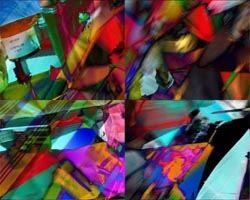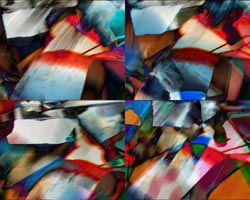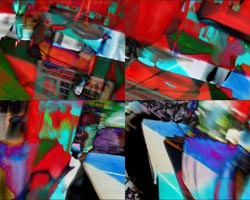Amir Muhammad's The Umbrellas of Ramadhan

Amir Muhammad is an independent writer and filmmaker based in Kuala Lumpur. He has a law degree but does not use it. In 2000 he wrote and directed Malaysia's first DV feature, Lips to Lips, which travelled to over a dozen festivals around the world and which will be finally released on VCD in Malaysia this year. In 2002 he made six short videos (shown collectively as 6horts); two of these shorts have won awards at the Singapore International Film Festival. "The Big Durian" is his second feature. He has since almost simultaneously directed and produced his third and fourth feature Tokyo Magic Hour and The Year of Living Vicariously. He has been writing for the Malaysian print media since the age of 14, had his own column in the New Straits Times titled Perforated Sheets until 1999, had selected articles published in Generations (together with Kam Raslan and Sheryll Stothard), and over the years have contributed to Malaysiakini, The Edge and Kakiseni.
About The Umbrellas of Ramadhan:
These images were taken from a digital video camera at
a pasar Ramadhan last year. They were then
manipulated by superimposition with each other and
colour distortion.
Conspicuous consumption in the Malay-Muslim community
reaches a peak during these last hours of each fasting
day. Although Ramadhan is supposed to instill
restraint and moderation, it’s common to buy too much
food. Rather than moan about this, “The Umbrellas of
Ramadhan” chooses a celebration of sorts by turning
the spectacle into a series of vibrant colours and
dancing lights. The way the fasting month is
celebrated in this region helps make us unique. These
pasar Ramadhan are popular not only among Muslims (and
Muslims who fast, at that). It is a cheerful
life-affirming spectacle because Malaysians can always
be counted on to come together when food and bargains
are involved.
The resulting images deliberately invoke the abstract
type of art chosen by many Malaysian Muslim painters
in the last few decades in swerving away from
figurative (considered un-Islamic) art. But if you
look closely enough you can see figures buying and
selling food, as well as price-lists, words like ‘air
bandung’ and brand-names. These subtle but
recognizable reductive signifiers then make the works
not that abstract after all.
The numbers are part of the strategy. There are 30
panels in each of the three works, representing the 30
days of the fasting month. (Although in the third
part, one panel is left seemingly blank because the
fasting month sometimes lasts only 29 days, depending
on whether the new moon is sighted or not), Even the
price of RM1,000 is deliberately chosen because the
holiest night in Ramadhan (nobody knows when this
takes place) is described as one which is worth "a
thousand months". It is believed that this night takes
place during 'the last third' of the month – this
common way of breaking up the month into 3 is
responsible for the fact that there are 3 parts.
You're invited to our Reading in conjunction with the exhibition on Tuesday, April 26, 2005. More details, click here.


1 Comments:
et tu, amir?
nice play of colours and texture...
and sublime subliminal undertones.
hmm...bunyi pretentious,kan? ;-p
wish i could still get the occasional dosage of your articles in the newspaper like back in the nineties...miss you-lah.
Post a Comment
<< Home